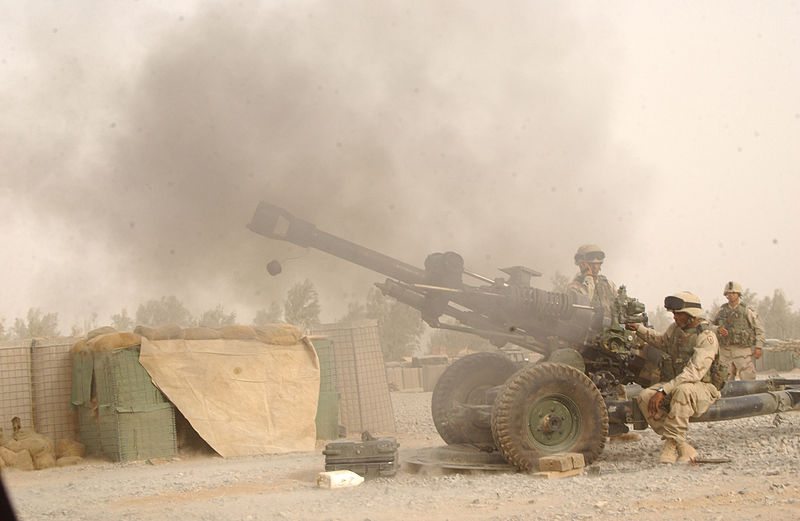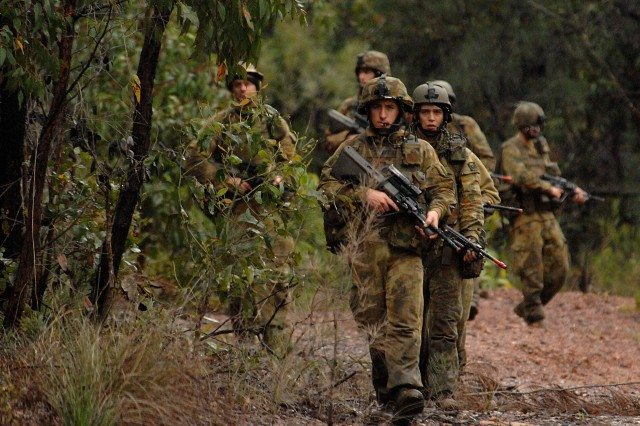An often under-appreciated aspect of equipment upgrades is the need for revised technical manuals, which are critically important because they provide Soldiers with the procedures to troubleshoot and repair life-saving equipment in the field.
To ensure that Picatinny’s new digitized M119A2 Howitzer technical manual will adequately support maintenance repairs, Soldiers from the 101st Airborne Division (Air Assault), Fort Campbell, Ky., recently assisted the M119A2 Howitzer Logistics Team complete the last phase of logistics training.
The M119A2 is a lightweight 105mm Howitzer that provides suppressive and protective fires for Infantry Brigade Combat Teams.
“The upgraded M119A2 Howitzer will be equipped with a Digital Fire Control System that integrates an inertial navigation system with guided-precision system technology to give the weapon the ability to self locate and accurately place rounds on target,” explained Deborah Le Vitin, M119A2 Logistics Manager, for the Program Executive Office for Ammunition.
Prior to next year’s fielding, the M119A2 must pass three logistics phases.
For the recent third and final phase, the Soldiers visited Picatinny Arsenal to complete the On-System Maintenance Technical Manuals. This phase demonstrates the safety, adequacy and accuracy of the technical manuals and initial spares support.
Since new equipment has been added to the M119A2, new technical manuals are needed and include instructions on the operation, handling, maintenance, and repair of the equipment.
During this phase, the Soldiers responsible for fixing broken howitzers and maintaining the howitzers received the new training manuals and were asked to perform tasks using only the new manuals as a guide.
While the tasks are being performed, observers from various military organizations evaluated the Soldiers’ performance to determine if the technical manuals are adequate.
Some tasks were timed or performed with bio-hazard gear to see how these conditions affected performance. The tasks included assembling and disassembling the equipment sled in case the lower rack has to be emptied and replaced.
Sgt. Jeremy Smith, who participated in the logistics demonstration, performs small arms and towed artillery repair.
“The past couple of weeks we’ve been working on the M119 with the digital control system,” he said. “The first part was the training portion of the gun and showing us the ins and outs of all the new stuff they’ve put on the guns — the parts of the digital control systems. The second week was the hands-on portion, where we got recorded for the log demo actually taking apart of the gun. We take it apart and reassemble it, checking the TM (technical manual) and making sure everything is good to go and everybody can understand it.”
Spc. Justin George also participated in the event. He said the most notable difference between the two M119 Howitzers is that the digitized M119 has a lot more parts.
Although George had not received training on the digitized M119, he had experience working on the M777A2 digital fire system from a previous deployment. The M119A2 and M777A2 fire control systems are similar, so gun crews can easily navigate between the different cannons.
“They’ve got the same basic system, so I came in and knew a lot about the system, but not everything. It’s a really good system,” George said. “It’s going to make it easier for us to quickly get rounds down-range on enemy targets.”
George added that if the digital fire control system were to malfunction, Soldiers can still fire the howitzer through the conventional method of optic sights.
Soldiers from the 82nd Airborne Division completed the first phase of the logistics testing, the Operator Logistics Demonstration in November 2011.
In January 2012, Soldiers from the 101st Airborne Division completed the second phase of the logistics testing, the Validation and Verification of Maintenance Technical Manuals.
The M119A2 upgrade is a collaborative effort between Program Manager-Towed Artillery Systems; the Armament Research, Development and Engineering Center; Tank-Automotive and Armaments Command; Training and Doctrine Command; Combined Arms Support Command and the Army Evaluation Center.











